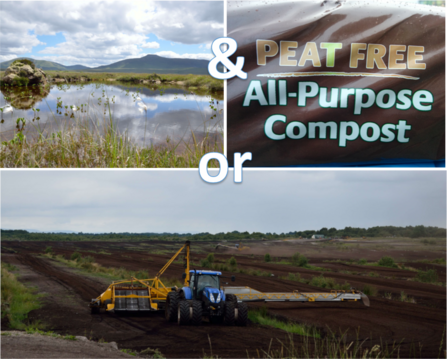Cheap, usually imported, bags of peat do not reflect the environmental costs to society caused by peat mining and are undercutting the production and supply of peat-free materials. Advances in the development of peat-free horticultural products, means that the UK could establish its own long-term viable industry providing sustainable soil conditioners and growing materials for amateur and professional gardeners
Many peat-free composts work as effectively or even better than peat. Much of the material used for peat replacement contributes to recycling, such as green compost, or uses by-products including wood brash and other forestry waste. Commercially grown and harvested Sphagnum moss is also proving popular with the professional horticulture industry.
At an International Peat Society Summit in Rotterdam in 2018 there was recognition that International policy is moving increasingly towards more sustainable products, through ecolabelling and demands on producers to bear the environmental costs of their activities. Supporting a speedy switch to peat-free products would help meet the environmentally responsible demands of society. It would also enable the UK to take a lead in supplying these sustainable materials rather than becoming dependent on imports.
A roundtable event held in Edinburgh including retailers and horticulture producers highlighted that there are already a number of manufacturers of peat-free soil conditioners and growing media in the UK. Given the right market signals and investment in this new industry by Government and with retailers support it will be possible to facilitate a shift away from peat and provide new opportunities for expanding employment.
Ending the horticultural use of peat is important to help protect rare wildlife habitat and reduce carbon emissions but is also essential to placing the UK’s gardening retail and horticulture industry on a secure long-term basis. Supporting the businesses that are developing the peat-free products is not just the responsibility of Government Environment Departments but also Trade and Industry and Climate Change.

